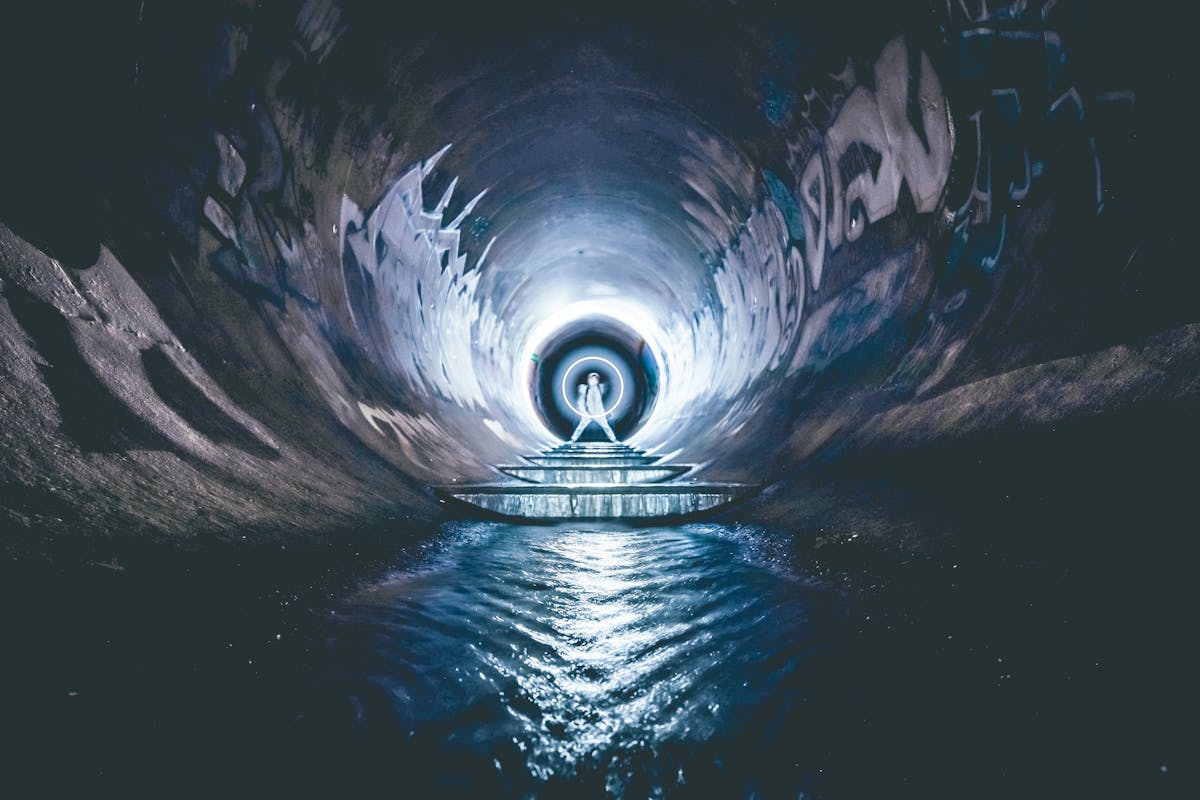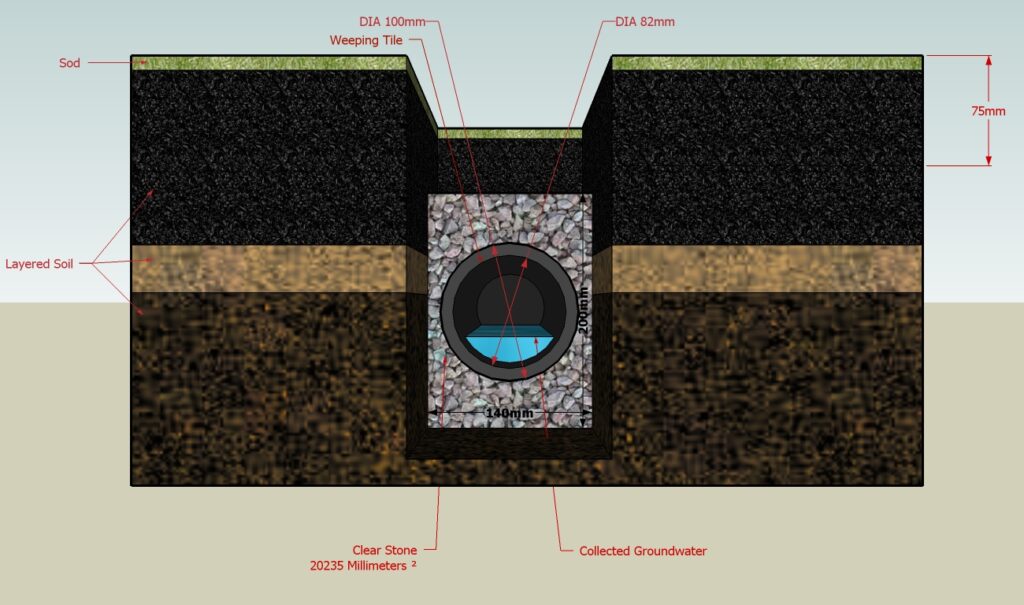If you’ve ever wondered how cities and neighborhoods in the United States manage to stay relatively flood-free despite heavy rains, you can thank one simple yet powerful component of the stormwater system — the catch basin. While it often goes unnoticed under a metal grate on the street or in your yard, this structure plays a massive role in keeping water, debris, and pollutants under control.
In this article, we’ll break down what a catch basin is, how it works, where it’s used, and why it’s such an essential part of American infrastructure — especially as the country faces more frequent and intense rainfall.
What Is a Catch Basin?
A catch basin is an underground chamber with a grated opening at the surface, designed to collect stormwater runoff and debris. It serves as the first line of defense in a stormwater drainage system, preventing flooding and protecting pipes from clogging. Once water flows through the grate, it enters a sump — a small pit at the bottom — where sediment and trash settle before the cleaner water exits through a connected pipe that leads to a storm sewer, ditch, or retention pond.
According to the Environmental Protection Agency (EPA), catch basins are classified as Best Management Practices (BMPs) under the Clean Water Act because they help remove pollutants before water reaches rivers or lakes. The EPA notes that they’re “vital for controlling sediment, trash, and oils in urban runoff.”
Why Catch Basins Matter
Across the United States, catch basins are part of nearly every urban drainage system. From New York City — which manages more than 1 billion gallons of stormwater daily — to small residential neighborhoods in Florida and Texas, these structures are everywhere. They’re not just for streets either; homeowners install smaller versions in their driveways, lawns, and patios to prevent flooding around the foundation.
Here’s why they’re essential:
- Flood Prevention – Catch basins collect rainwater quickly and redirect it into storm drains, preventing surface flooding and pooling on roads, driveways, and parking lots.
- Pollution Control – They trap debris, oils, and metals before runoff enters rivers and lakes, improving water quality.
- Infrastructure Protection – Proper drainage reduces erosion, foundation damage, and cracking in roads and driveways.
- Compliance with Federal Law – The EPA’s NPDES program (National Pollutant Discharge Elimination System) requires stormwater management systems in all 50 states, and catch basins are a core part of compliance.
The American Society of Civil Engineers (ASCE) emphasizes that catch basins can reduce urban flood damage by up to 40%, making them one of the most cost-effective infrastructure tools available.
How a Catch Basin Works
The science behind a catch basin is simple but effective. It’s a gravity-based system designed to separate solids from water.
- Inflow – Rainwater enters through the surface grate.
- Sediment Separation – Heavy debris like sand, leaves, and trash settle in the sump at the bottom.
- Outflow – Cleaner water flows out through a pipe connected to the municipal drainage network.
According to the EPA Stormwater Management Manual, the sump typically ranges from 6 to 18 inches deep and captures 70–90% of street debris before it can enter pipes.
Residential Catch Basins Installation: A Quick Guide
For homeowners, catch basins are practical solutions for driveways, lawns, or yards that tend to collect water. A typical residential basin includes three main components: the grate, the basin box, and the outlet pipe.
| Part | Description | Average Cost (US$) | Installation Tip |
|---|---|---|---|
| Grate | Metal or plastic cover | $20–$50 | Choose ADA-compliant designs for driveways |
| Basin Box | Plastic or concrete chamber | $30–$150 | Dig 2 ft deep and backfill with gravel for stability |
| Pipe | 4–6 inch PVC or HDPE | $10/ft | Maintain a 1–2% downhill slope |
Total DIY Cost: $100–$300
Professional Installation: $500–$1,500
Most US cities require a small drainage permit for residential installations, typically costing between $50 and $200.
Catch Basin vs. Other Drainage Systems
Catch basins often get confused with other drainage features. Here’s a simple comparison:
| Feature | Grate | Sump | Best For | Typical Cost |
|---|---|---|---|---|
| Catch Basin | Yes | Yes | Streets, driveways, parking lots | $100–$1,500 |
| Storm Grate (Curb Inlet) | Yes | No | Roadsides, intersections | $200–$500 |
| French Drain | No | No | Yards, gardens | $20/ft |
| Dry Well | No | Yes (gravel pit) | Rain gardens, lawns | $300–$1,000 |
Unlike a French drain, which collects groundwater, a catch basin handles surface runoff. This makes it perfect for areas that flood during storms rather than from soil saturation.
Regional Variations Across the United States
Catch basins are installed in nearly every state, but designs vary depending on climate and environment:
| Region | Example States | Basin Type | Unique Feature | Cleaning Frequency |
|---|---|---|---|---|
| Northeast | NY, MA | Concrete | Heated grates for snow melt | 4x/year |
| Southeast | FL, GA | Plastic | Hurricane-rated for heavy rain | 2x/year |
| Midwest | IL, OH | HDPE | Anti-freeze baffles for ice | 3x/year |
| West | CA, TX | Modular concrete | Eco-grates with sediment traps | 2x/year |
| Southwest | AZ, NV | Dry basin variant | Designed for flash floods | 1x/year |
These regional adaptations follow standards from AASHTO M306 and USGS stormwater reports.
Maintenance and Longevity
Catch basins are incredibly durable, with lifespans of 30–50 years for plastic models and over 75 years for concrete ones. However, they require regular cleaning to perform well.
Typical Maintenance Schedule:
- Quarterly: Visual inspection and debris removal.
- Biannually: Vacuum out sediment and clean sump (cost: $100–$300).
- Every 5 Years: Replace or reseal grates ($50–$200).
Cities like Los Angeles and Seattle clean high-traffic basins 3–4 times per year. Neglecting maintenance can lead to clogs, backups, and even fines — in some states, up to $500 per incident for stormwater system failure.
Environmental Benefits
Catch basins aren’t just about drainage — they’re environmental protectors. According to the EPA, properly maintained systems reduce sediment runoff by up to 60% and capture metals, oils, and trash that would otherwise pollute waterways. Many US cities now upgrade basins with biofilters or oil-water separators, improving pollutant capture to 95% efficiency.
Some municipalities even offer stormwater management rebates for property owners who install or upgrade catch basins that meet EPA BMP standards.
Legal and Regulatory Context
Under the Clean Water Act (1972), all urban developments over one acre must include stormwater management features like catch basins. The NPDES Phase II Rule further requires local governments to implement public education and maintenance programs for these systems.
State and city-level agencies — such as the Texas Department of Transportation (TxDOT) and NYC Department of Environmental Protection (DEP) — have specific size, material, and load-bearing requirements for catch basins based on regional conditions.
US Catch Basin Installation Steps (DIY Overview)
If you’re installing a small basin in your yard or driveway, here’s a quick overview from This Old House and Home Depot guides:
- Call 811 – Contact the national Dig Safe line before excavation.
- Mark and Dig – Excavate a 3×3 ft hole, 2–3 ft deep.
- Place Basin – Position the chamber and connect PVC piping with a 1/4 inch per foot slope.
- Backfill – Add 4 inches of gravel for stability.
- Install Grate – Level it with surrounding surface and secure tightly.
Total installation time is typically 4–6 hours, depending on soil type.
The Evolution of Catch Basins in America
Catch basins have a long history in US infrastructure. The first versions appeared in Philadelphia in the 1800s, designed for cobblestone streets. By the 1970s, they became standardized nationwide under the Clean Water Act. Today, more than 2.5 million are in operation, and climate change is driving increased demand — with installations rising 25% since 2015, according to FEMA.
Our Previous Work On Catch Basin
Final Thoughts
The next time you walk over a grated opening on the street, take a moment to appreciate the engineering beneath your feet. Catch basins quietly protect homes, roads, and waterways from the destructive effects of stormwater — a small investment that delivers massive environmental and safety benefits.
Whether you’re a homeowner installing a small yard basin or a city engineer managing urban runoff, these systems remain a cornerstone of America’s flood defense strategy.
Key Takeaway: A catch basin is more than a drain — it’s a vital piece of US infrastructure ensuring that rainwater flows where it should, keeping communities safe, clean, and sustainable.








